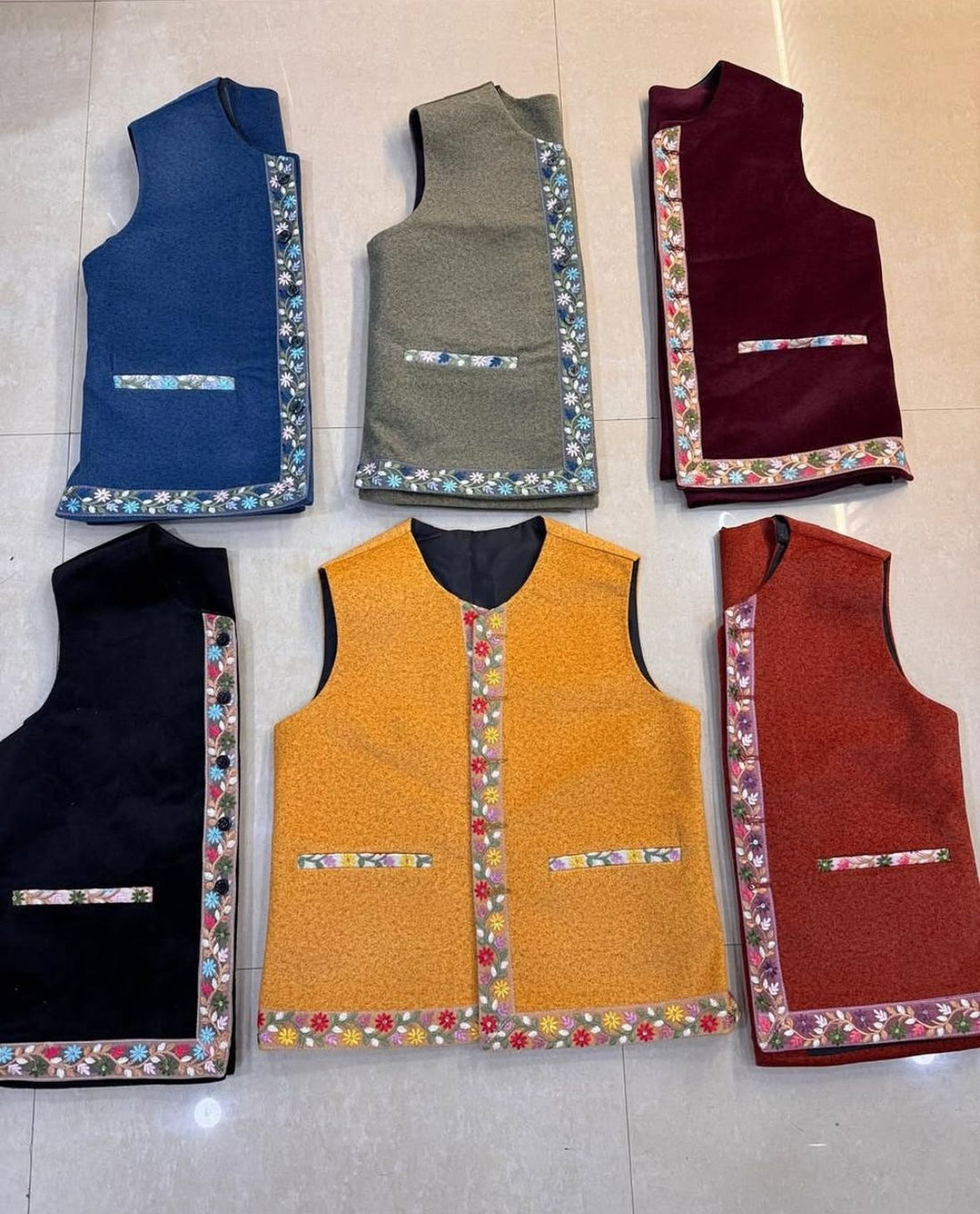
The Timeless Elegance of Sadri: A Journey Through History, Culture, and Craftsmanship
Share
In the vibrant tapestry of traditional Indian clothing, the Sadri holds a special place as a symbol of elegance, heritage, and artistry. Often referred to as a "waistcoat" or "jacket," the Sadri is a sleeveless garment that has been an integral part of Indian attire for centuries. In this blog post, we explore the rich history, cultural significance, and intricate manufacturing process of the Sadri, a garment that beautifully blends tradition with timeless style.
A Glimpse into the History of Sadri
The Sadri has its roots in the royal courts of India, where it was worn by kings, nobles, and aristocrats as a mark of prestige and sophistication. Its origins can be traced back to the Mughal era, when it was introduced as part of the royal wardrobe. Over time, the Sadri evolved, adapting to regional styles and cultural influences.
In Rajasthan, the Sadri became a staple of traditional attire, often adorned with intricate embroidery and mirror work. In Gujarat, it took on a more colorful and vibrant form, reflecting the state's love for bold patterns and hues. Today, the Sadri is celebrated across India and beyond, cherished for its versatility and timeless appeal.
Cultural Significance of Sadri
The Sadri is more than just a garment; it is a reflection of India's rich cultural heritage. Each region has its own unique style of Sadri, showcasing the diversity and artistry of Indian craftsmanship. Here are some ways the Sadri holds cultural significance:
- Royal Legacy: The Sadri is a reminder of India's royal past, often associated with grandeur and elegance.
- Festive Attire: It is a popular choice for weddings, festivals, and special occasions, symbolizing celebration and joy.
- Regional Identity: Different states have their own variations of the Sadri, each representing the local culture and traditions.
- Artistic Expression: The embroidery, patterns, and designs on a Sadri often tell stories, depicting motifs inspired by nature, mythology, and daily life.
The Art of Making a Sadri
The creation of a Sadri is a meticulous process that requires skill, precision, and a deep understanding of traditional techniques. Here’s a step-by-step look at how a Sadri is made:
1. Fabric Selection
The process begins with the selection of high-quality fabric, such as cotton, silk, or wool, depending on the design and purpose of the Sadri. The fabric is chosen for its texture, durability, and ability to hold intricate embroidery.
2. Design and Pattern Making
Artisans create detailed designs and patterns, often inspired by traditional motifs. These designs are then transferred onto the fabric using chalk or tracing paper.
3. Cutting and Stitching
The fabric is carefully cut according to the pattern and stitched together to form the basic structure of the Sadri. Precision is key to ensure a perfect fit and finish.
4. Embroidery and Embellishments
This is where the magic happens. Skilled artisans hand-embroider the Sadri using techniques such as:
- Zari Work: Intricate gold or silver thread embroidery.
- Mirror Work: Small pieces of mirror sewn into the fabric, adding a touch of sparkle.
- Patchwork: Pieces of fabric stitched together to create colorful patterns.
- Beadwork: Tiny beads sewn onto the fabric to enhance its beauty.
5. Finishing Touches
Once the embroidery is complete, the Sadri is given its final shape. Buttons, hooks, or ties are added, and the garment is pressed to ensure a polished look.
The Role of Artisans
The making of a Sadri is a labor of love, carried out by skilled artisans who have inherited this craft from their ancestors. These artisans pour their heart and soul into every piece, ensuring that each Sadri is a masterpiece of artistry and tradition. By supporting the production of Sadris, we not only celebrate their talent but also contribute to the preservation of this ancient craft.
Why Sadri is Unique
- Versatility: The Sadri can be paired with a variety of outfits, from traditional dhotis and kurtas to modern shirts and trousers.
- Timeless Appeal: Its classic design makes it a wardrobe staple that never goes out of style.
- Cultural Heritage: Each Sadri is a piece of living history, reflecting the rich traditions of India.
- Handcrafted Beauty: The intricate embroidery and embellishments make every Sadri a unique work of art.
How to Style a Sadri
The Sadri is a versatile garment that can be styled in numerous ways:
- Traditional Look: Pair it with a kurta and dhoti for a classic Indian ensemble.
- Fusion Style: Wear it over a shirt and jeans for a contemporary twist.
- Festive Attire: Choose a heavily embroidered Sadri for weddings and special occasions.
- Layering Piece: Use it as a layering garment during cooler months for added warmth and style.
Preserving the Legacy
At Himalayan Vibes™, we are proud to showcase the exquisite Sadris, each a testament to the skill and dedication of Indian artisans. By choosing a Sadri, you’re not just embracing a piece of clothing but also becoming a part of a centuries-old tradition. Together, let’s celebrate and preserve the rich cultural heritage of India.
Explore our collection of Sadris and experience the magic of Indian craftsmanship. Every stitch tells a story—what will yours be?
